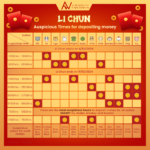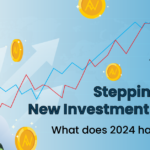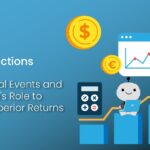
Background
In the past few weeks, global stock markets have been hit hard, with over US$6 trillion in value wiped out. On August 5, 2024, the Nikkei 225 plummeted by 12.4%, and the NASDAQ 100 dropped 6% in seconds, raising fears of a broader market decline. Investors are worried about a potential U.S. slowdown and disappointing megacap earnings amidst this turmoil.
Recession Risk: Credible or Overblown?
To determine whether we are truly in trouble, let’s explore the factors that are playing a major role in the current financial markets turmoil.
Weaker-than-expected U.S. non-farm payroll
The release of weaker-than-expected U.S. non-farm payroll data on August 2, 2024, sparked recession fears and panic selling. The job gains fell from +179,000 in June 2024 to +114,000 in July 2024. However, this slowdown is likely to be normalization from the tight post-COVID labor market to pre-COVID levels (2011-2019) and should be expected as the Federal Reserve maintains its restrictive monetary policies.
Despite the slowdown, job gains are still positive, far from the negative losses during the 2007/08 Great Recession and the initial 2020 COVID shock. Wage growth remains strong at +3.6% year-on-year in July 2024, indicating that employers do not foresee a downturn.
Lower-than-expected Megacap Earnings: Is it really a major concern?
Investor concerns were heightened by lower-than-expected earnings from megacap companies like Tesla and Microsoft, which drive a significant portion of the U.S. stock market gains. However, excluding NVIDIA (reporting on August 29, 2024), the “Magnificent 7” companies reported a median earnings growth of +21.0% year-on-year in Q2 2024. This contrasts with a median growth of 8.0% among 73 NASDAQ 100 companies that have reported, which is still robust.
Japan: The Great Unwind
If recession fears are exaggerated and corporate earnings remain strong, what caused the market plunge? The Bank of Japan’s decision to raise its benchmark interest rates to 0.25% on July 31, 2024, surprised financial markets and triggered unwinding of carry trades. Investors borrowing at low Japanese rates to invest in higher-return assets elsewhere had to reverse these positions, leading to sharp declines in U.S. and Japanese stocks, which had seen substantial gains earlier in the year.
The Fear Gauge & Short Volatility Trades
Investor panic also caused the Chicago Board Options Exchange Volatility Index (VIX), or the “fear gauge,” to spike to 42 points, the largest surge since 1990. Short-volatility trades, which had grown since COVID, added to the market declines. As market swings increased, investors rushed to buy downside hedges, causing market makers to amplify the declines through their own hedging activities.
Overall Investment Implications
Whether recent market fluctuations mark the end of a pullback or the start of a prolonged correction is uncertain. However, long-term investors with idle cash and strong holding power can benefit by focusing on mid-to-long-term fundamentals and viewing short-term volatility as opportunities to buy at discounts.
Historically, over the past 20 years, there have been 30 market corrections, taking a median of 28 days to reach a bottom and 46 days to recover. This suggests that current market conditions present rare opportunities for savvy investors.
Concluding Note
As Warren Buffett famously said, “Be fearful when others are greedy. Be greedy when others are fearful.” This timeless advice encourages investors to remain patient and strategic amidst market turbulence.





















